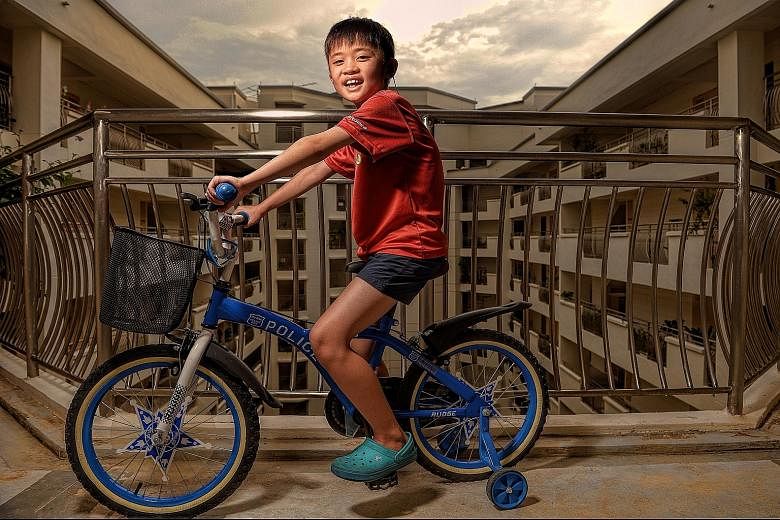Apart from his hearing aids, Hoh Jun Gi looks just like any regular 10-year-old boy.
At home, he spends hours watching YouTube videos on his laptop - mostly educational cartoon and science trivia clips.
At school, he scores nearly full marks for mathematics and has a keen interest in science.
His mother, housewife Leong Hong Yeok, 42, describes him as a "happy boy".
But 10 years ago, Jun Gi was better known as the "bubble boy".
At five months old, he was diagnosed with severe combined immunodeficiency, leaving his body unable to fight infections.
This is sometimes referred to as "bubble boy disease" - a term that can be traced back to American David Vetter, who had this genetic defect and lived in a germ-free plastic bubble before he died in 1984.
In 2006, Jun Gi made history by becoming the first person to be saved by the Singapore Cord Blood Bank. He was then known as Sin Jun, before his parents changed his name. He received a cord blood transplant at the age of nine months when a match was found.
His story made headlines, though there are few signs of this event today in the family's five-room flat in Woodlands.
But a single wall, plastered with photos of Jun Gi, serves as a reminder of the life that the successful cord blood transplant had gifted the boy.
On top of immunodeficiency, he was also treated for tuberculosis, which left him with hearing problems. In 2008, he had a cochlear implant in the right ear, and now also wears a hearing aid on the left.
"Sometimes, we talk to him about it," said Madam Leong. "He knows he was in hospital before, but he does not have a clear picture of what happened."
In the initial years after the transplant, only healthy visitors could visit him. He was not allowed to eat raw food or fruit, and the house had to be kept very clean.
Today, he is able to play outdoors without an excessive fear of germs.
He can eat most foods, though he sticks to a healthy diet - no processed food or fizzy drinks, minimal fried items, and plenty of fruit and vegetables.
His parents are now also adopting a healthier diet, thanks to him.
"We have been partly influenced by him, " joked Madam Leong. Her husband, Mr Hoh Kim Youn, 42, is a service engineer.
Jun Gi continues to go for regular check-ups and takes thyroid medication. He also does core-strengthening exercises due to mild scoliosis.
The soft-spoken boy hopes to be a scientist when he grows up. "I like all forms of science, especially chemistry. I like to watch chemical reactions, " said the boy, who is in MacPherson Primary School.
Now that his health is stable, Madam Leong plans to return to work. She had quit her job as a quantity surveyor to look after her only child.
But it may take time for Jun Gi to get used to being independent, and for her to worry less about him.
For instance, he calls for her if the house becomes too quiet, just to know where she is. And she locks all windows when Jun Gi is left home alone for a few hours.
"I am still quite paranoid," she said. "I am training myself to let go."


